The Colombian flag symbolizes the nation’s resilience, diversity, and unity. Its distinctive colors and design reflect Colombia’s rich history and cultural heritage.
As a prominent national emblem, it embodies the collective spirit and pride of the Colombian people, representing their journey through history and their aspirations for the future.
Flag of Colombia
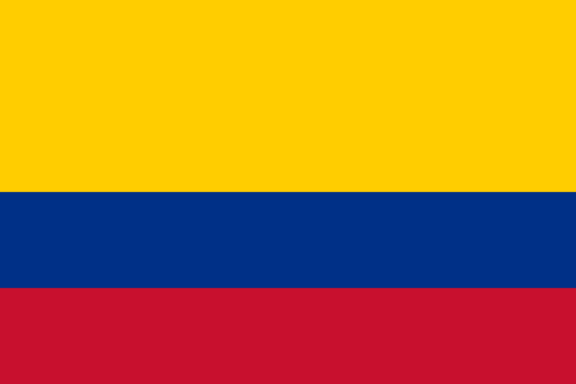
The Colombian flag features a distinct horizontal tricolor design. It comprises three bands: yellow at the top covering half of the flag’s width, and blue and red occupying the remaining space in equal measure.
This straightforward yet impactful design has become a powerful symbol of Colombia, recognizable worldwide. The flag’s layout, with its bold colors and clean lines, reflects Colombia’s identity and has become a significant emblem of national pride and unity.
Flag of Colombia: Color Palette
Colombia Flag Map
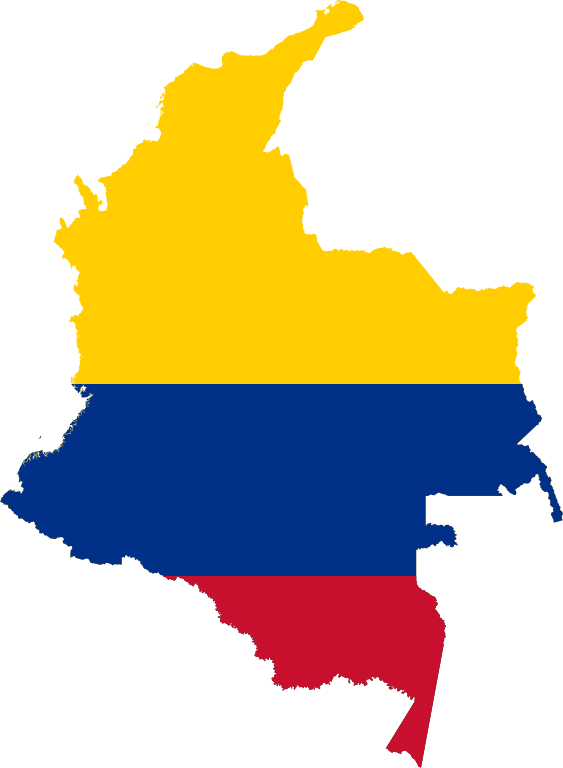
Colombia Flag Emoji: 🇨🇴
The color palette of the Colombian flag is a harmonious blend of three primary colors, each chosen for its deep symbolic resonance. This palette not only represents significant aspects of Colombia’s national character but also adds to the aesthetic appeal of the flag.
Meaning of Each Color
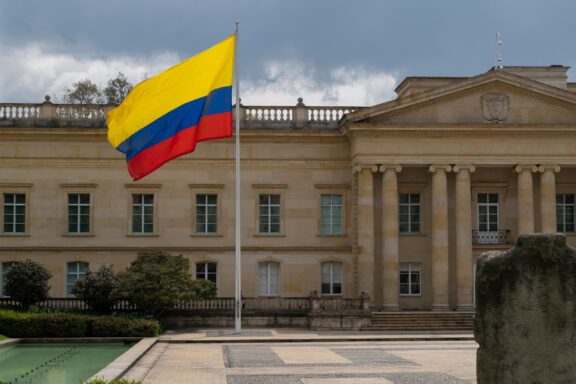
Yellow
The yellow in Colombia’s flag is emblematic of the country’s rich natural resources, particularly its gold deposits. Beyond its material connotations, yellow represents broader concepts like sovereignty, harmony, and justice.
The yellow also signifies the Sun, symbolizing enlightenment, agricultural prosperity, and the nurturing warmth vital for the nation’s growth and sustainability.
Blue
Blue is a tribute to the expansive skies and the majestic Pacific and Atlantic oceans that frame Colombia. This color goes beyond geographical representation to symbolize loyalty and vigilance.
The blue reflects the nation’s deep connection to its maritime heritage, encompassing the vastness of the skies and the oceans and the boundless opportunities they present.
Red
Red in Colombia’s flag is a poignant reminder of the bravery and sacrifices made during the struggle for independence. It embodies the valor and resilience of those who fought for freedom, signifying the bloodshed and sacrifices caused to pursue liberty.
Red also resonates with the spirit of resilience and embodies the enduring strength and determination of the Colombian people.
Colombian Coat of Arms
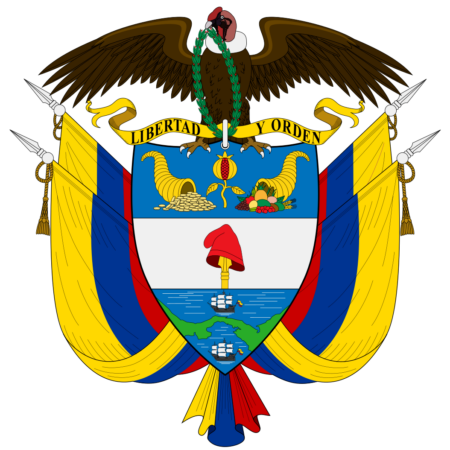
The coat of arms of Colombia is a powerful representation of the country’s extensive historical saga and cultural essence. It encapsulates the evolution of Colombia through various epochs, encompassing maritime ventures and the pursuit of autonomy and affluence.
It signifies the integration of diverse facets of Colombian existence — its bounteous natural endowments, dedication to freedom, and rich historical connections. As a principal symbol of the nation, it mirrors the Colombian people’s collective ethos and enduring strength, deep respect for liberty, and profound bond with their heritage and land.
This insignia, abundant in representational meaning, illustrates Colombia’s complex character and recounts the saga of a nation cherishing its history while advancing toward a future replete with aspirations and possibilities.
Historical Evolution and the Meaning Behind Changes
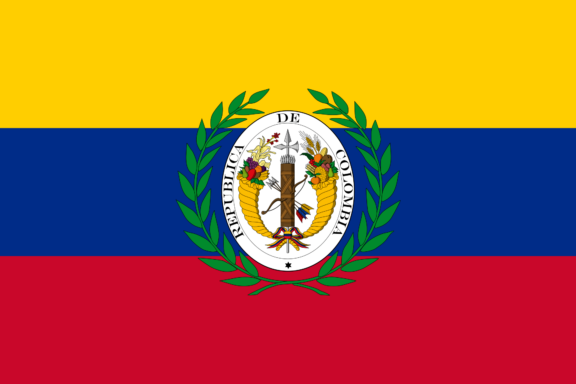
The flag of Colombia has undergone a significant evolution in its design and symbolism over time. Initially, during the early 19th century, the region that would become Colombia used flags inspired by the struggle for independence, often featuring variations of red and yellow.
The modern tricolor design was adopted after Colombia’s independence. The colors yellow, blue, and red were first introduced by General Francisco de Miranda, a precursor to Colombian independence, and were later adopted by the Republic of Colombia.
The enduring design of the flag signifies stability and continuity in Colombia. Although their specific meanings have been refined, the colors have consistently represented critical aspects of Colombia’s identity, including its natural wealth, struggle for independence, and rich cultural heritage.
The flag’s evolution is thus not just a tale of changing designs but a reflection of the nation’s journey and the enduring values that have guided it through history.
Overall Symbolic Meaning of the Flag
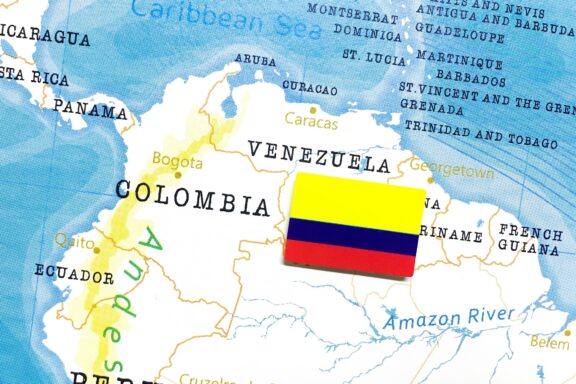
The flag represents the convergence of its prosperous Colombian history, cultural depth, and collective aspirations. It encapsulates the essence of Colombia’s journey, from its struggle for independence to its emergence as a diverse and unified country. It features a simple design that tells a story of resilience, pride, and the continuous evolution of a nation deeply connected to its roots.
Similar Flags to the Flag of Colombia
Colombia’s flag shares similarities with several other national flags, primarily due to shared historical influences and cultural ties:
Ecuador
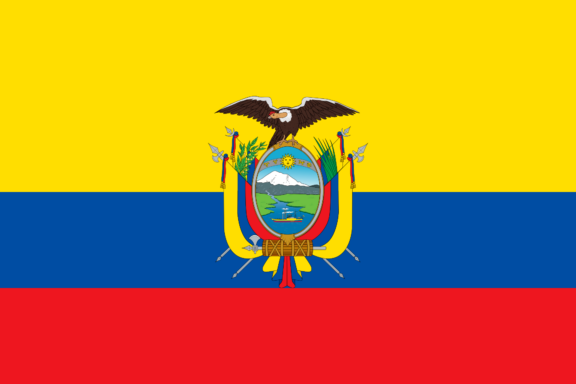
Ecuador’s national flag is closely similar to Colombia’s flag due to their shared history. Both countries were part of Gran Colombia and adopted the yellow, blue, and red tricolor.
The main difference is Ecuador’s inclusion of its coat of arms in the middle of its flag. This similarity is rooted in their path towards independence and reflects their shared cultural and historical heritage.
Venezuela
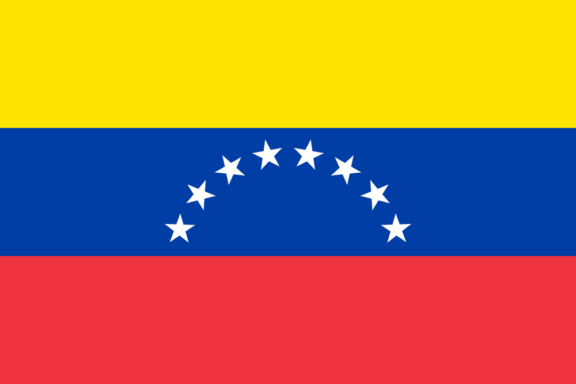
Venezuela’s flag also shares the yellow, blue, and red tricolor, a testament to its historical connection with Colombia as part of Gran Colombia.
The Venezuelan flag is distinguished by a set of stars and, in some versions, the national coat of arms. The colors represent both nations’ shared aspirations and struggles during their independence movements.
Conclusion
The Colombian flag, a symbol rich in meaning, is significant among world flags, embodying the nation’s history, diversity, and aspirations. It is a source of pride for Colombians, reflecting their cultural heritage and unity and representing Colombia’s distinct identity on the global stage.
Image Sources and Copyright Information
- Colombian Flag Flying in Front of Presidential Palace: © Elena Berd/Shutterstock
- Map of Colombia with Flag Overlay: © hyotographics/Shutterstock